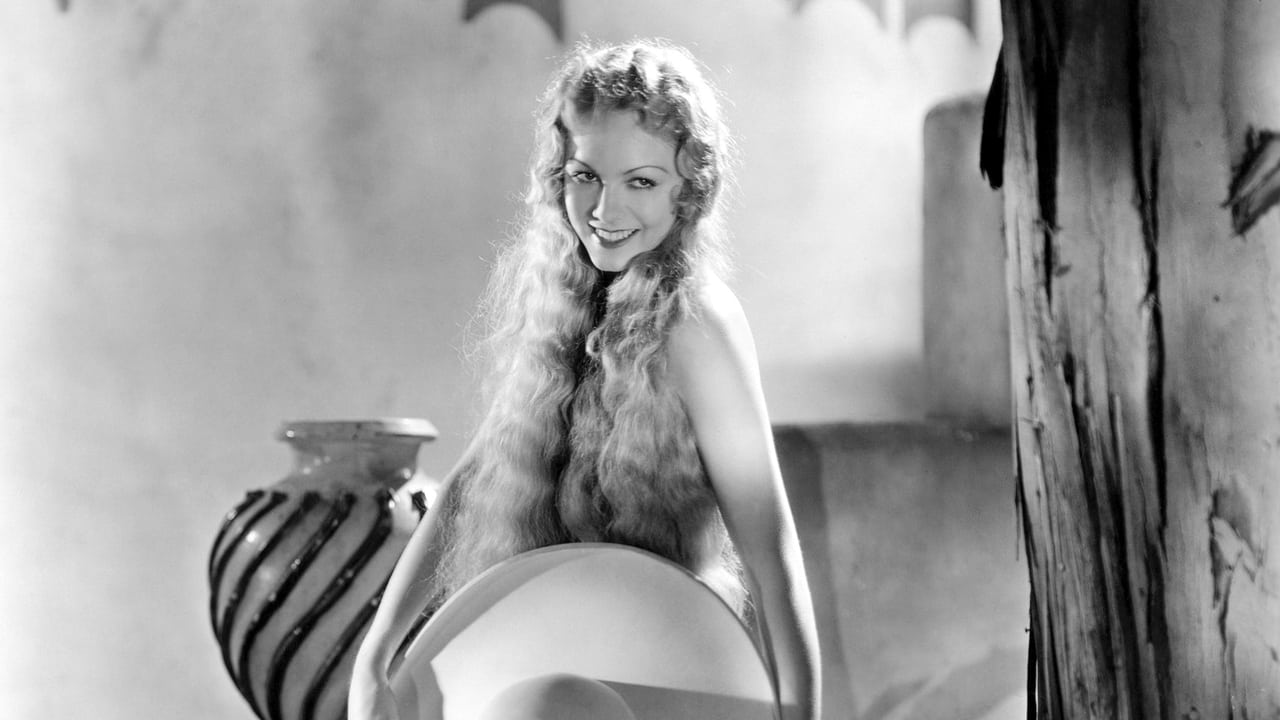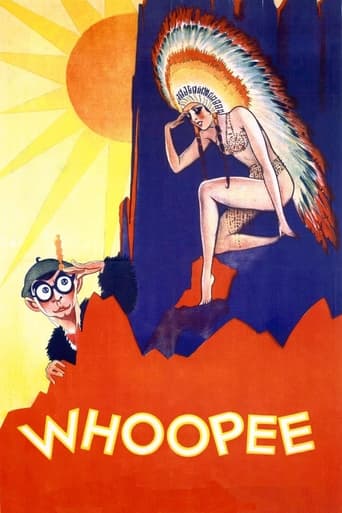



I like the storyline of this show,it attract me so much
View MoreVery well executed
Dreadfully Boring
Excellent and certainly provocative... If nothing else, the film is a real conversation starter.
View MoreI was very excited when I found out that Warner home video was putting it out on d.v.d.I had the v.h.s version .But when I finally got the d.v.d version I was shocked.It was enhanced in three colors!The sequence where Eddie is singing making whoopee the beautiful sky was no linger greenish but now had a bluish tint.The scarfs of all the cowboys and cowgirls ,in the beginning of the film,instead of greenish scarfs ,they too had bluish tints.Evin Eddie's shirt was no longer greenish.It was bluish,but it was moderately enhance,not totally. You had some scenes that retina the greenish orange dirt yellowish look.You did see eddies shirt become greenish again in some scenes.But the point is time Warner or the Goldwyn companies should not of enhanced the colors .They were okay.It was one of the few surviving two strip Technicolor production s that had more colors in the art direction,than other early color film productions Time Warner or Samuel where depriving the new classic film fans of seeing the film the way it was,the way audience in 1930 and us audience in 1979,when h.b.o. premiered it and when it came out on cassette,As well as those who saw it on the nostalgia channel.saw it.Although either company had the legal right to change some of the color,morally they did was wrong.They also legally did wrong when they did not advertised the d.v,d as third color enhanced version of the original two color production.The same problem when t.c.m showed the enhanced version of Dr.X and Mystery of the wax museum and the Ben Hur color sequences,1926,As well as the ending color sequence in It's a great life ,1929.The introduction did not tell audiences they were going to see something enhanced.They all violated the truth in advertisement law.Well it's still a good movie.I just order a v.h.s copy left over,since my old tape is getting worn,cause it retains the greens and oranges. I gave this version only a 9 cause it was enhanced .05/9/13, p.s the good side of the d.v.d, it's very sharp and clear
View MoreIn its day, this must have been a fine picture and I'm sure it made Sam Goldwyn a lot of money. But, after 76 years, this film has not aged well. In fact, much of the humor seems pretty unfunny nowadays--especially since some of it is so offensive towards Indians and Blacks. Cantor in black face and natives who continually say "ugggh" were considered funny stereotypes when WHOOPEE was playing on stage and film, but this just provides uncomfortable today. In fact, considering that so many jokes are based on this, it may be very hard viewing for many, though I also believe you can't totally focus on this or else you'll be throwing out so much of our history. Now I am sure in 1930 they may have meant no harm by these scenes--nevertheless, this doesn't mean they are okay. Apart from these aspects of the film, the jokes seem old and the Busby Berkeley dance numbers also seem pretty out of date--though both are pretty risqué for the time--with a lot of sexual innuendos! Apart from the bizarre song and dance numbers in FLYING DOWN TO RIO, the Indian dance from this movie might just be one of the weirdest and most ridiculous numbers of the era.But the movie still gets a score of 4 because it was very competently made and the two-color Technicolor is pretty good for the era (though of course, nowhere near as nice as the later full color films). Plus, it is important historically. Even as a flawed film, it's good we still have an excellent copy--this isn't true of a lot of the films from 1930!By the way, before you assume I am a confirmed Eddie Cantor hater, understand that I have given excellent reviews to some of his later films. But just not this one.
View MoreThis has always been a favourite of mine, nice and primitive, jolly and inconsequential, a window on a vanished world - and race. It's been screened in the UK without warnings up till now, that world might have gone by now too. Un-masochistic people today who are offended by Jewish Cantor's jokes and temporary black-face are presumably intelligent enough to realise that they're forcing themselves to watch a rather old film and should either make the necessary allowances or switch it off.The whole film is based on the racial premise that oil and water don't mix - the main love interest is between a white woman and a (pardon me - it's the 2-strip Technicolour!) Red Indian (who by the way appeared uncannily similar to Woody out of Hellzapoppin, and both actors died young). A fallacious hypothesis and nonsense too of course, but a concept always upheld in Hollywood's Golden Age - nowadays we're at the other extreme and are constantly instructed that oil and water are identical. Apart from all that it's a breezy authentic view of a 1920's Ziegfeld show, complete with bouncy cherubic cowboys in chaps and huge stetsons, pretty rosy faced chorus girls and some lovely witty songs by Donaldson & Kahn, especially Whoopee and My baby just cares for me. Busby Berkeley came up trumps with some of his best dance routines including a perfectly performed Mexican Wave and some magical from the ceiling shots. Eddie as usual never shuts up, he must have brought the House down with his vivacious performance in this.With all its moral faults Whoopee is still a treasure and deserves preservation with a billion dollar remaster, even if complete with a Government Health Warning before the credits.
View MoreI had my reservations about this movie before I watched it. But, when the movie ended, I was very surprised by how entertained I was.The storyline to this movie is very simple. Henry Williams (Eddie Cantor) elopes with Sally Morgan (Eleanor Hunt), who is already engaged to Sheriff Bob Wells (Jack Rutherford). After Bob Wells finds out that Sally and Henry eloped, him and his buddies head out to find Henry and Sally, and they plan to hang Henry as punishment for running off with the Sheriff's fiancé, and the comedy goes on from there.Like I said, it is a very entertaining film. Eddie Cantor shows his true comedic talent (as always) in this film. I would highly suggest this film. It is very humorous and entertaining. And it's got some great routines.
View More